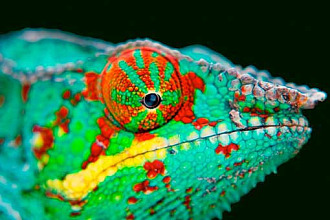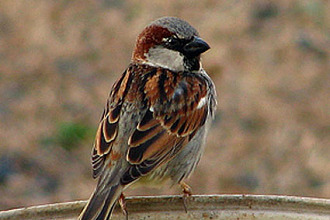It is not by accident that the African Grey parrot is in a category of "prey" rather than "predator" in this troubled world of questionable survival for gentle, non-aggressive creatures like Greys who are monogamous and reproduce easily even in captivity.
These birds feed on fruit, seeds, nuts and leafy matter, posing no danger to the lives of others. When photographers with hidden cameras in Kenya, for example, find flocks of the Congo African Greys foraging on the ground for nourishment or simple curiosity, it's obvious these gorgeous birds covered with mostly gray feathers but with bright red tails are not wearing camouflage! So while the Greys are investigating the ground cover, photographers record their careful watch for predators that might be staring at them, ready to pounce. These foot-long wary wild birds have their best Creator-supplied not-by accident defense in using their excellent body design with hollow bone and feather shafts that keeps their weight to less than a pound and thus is conducive to rapid flight in a fast get-away—considering their extreme vulnerability to harm!.
But for us humans, the African Grey's intriguing and not-by-accident God-given intelligence is almost legendary. Some researchers have compared their mental acuity to that of chimpanzees, dolphins, and even five-year-old humans! But their personality can quickly change from serene to volatile. Researchers state their not-by-accident emotional nature compares to a child going through its "terrible twos"! The change is startling if you have not learned that these birds are not to be considered domesticated as are dogs or horses. These birds are wild and basically need to be considered as such! It is their human companions who need to study to understand their wants! (So say all researchers of these remarkable birds.)
Finally, it is their not-by-accident ability not only to mimic human voices, (often quickly learning names of objects and people) but it's their cognitive skill that causes some Greys at times to respond with creative phrases to situations that wow humans with whom they converse. What other creature, for example, would you find like our own pet African Grey B-R-D who commented to our visiting pastor-son George one day, "Let's pray about it!" And another day when a large pothole was unexpectedly slammed into, someone else's pet Grey was jarred off his perch while travelling in his cage inside a motor home. It is recorded that the bird shook himself then shouted, "Whooa! WHAT was THAT????!!!."
These same creatures, retaining the wariness of danger in the wild, not by accident will become nervous when stared at—a response from days when predators stared before pouncing. Their reaction will be flight—or a nasty bite from sharp beaks. However, as they learn to trust their human caretakers, they are delightful companion pets—if one is prepared to give love to a small child for perhaps 60 years! They are also sensitive to human emotion and will endeavor to cheer up human friends when downcast, bringing God's joy gift into the life of a human willing to give love, care and respect to them!
"NOT BY ACCIDENT" (c) Juanita Kretschmar is used by permission and was first published in the book "Not By Accident 3 pages 2 - 3


























